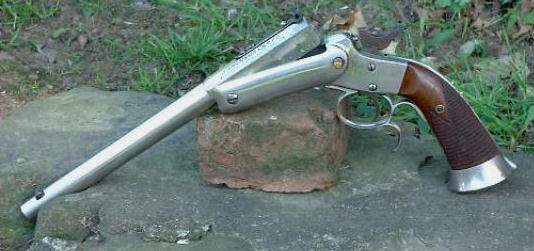

 The Accurate Reloading Forums
The Accurate Reloading Forums  THE ACCURATE RELOADING.COM FORUMS
THE ACCURATE RELOADING.COM FORUMS  Guns, Politics, Gunsmithing & Reloading
Guns, Politics, Gunsmithing & Reloading  Single Shot Pistols
Single Shot Pistols  6mm TCU back to .223 Rem. Can it be done?
6mm TCU back to .223 Rem. Can it be done?Go  | New  | Find  | Notify  | Tools  | Reply  |  |
| One of Us |
If it's just 223 necked to 6mm you could neck it back down...might have to watch the neck thickness though. Love shooting precision and long range. Big bores too! Recent college grad, started a company called MK Machining where I'm developing a bullpup rifle chassis system.  | |||
|
| one of us |
If the brass is in good condition, it should be fine. I just took down a number of Lapua cases in 6.5x55 AI-J back down to 6.5x55 with no problems -- and no case losses, either. Bobby Μολὼν λαβέ The most important thing in life is not what we do but how and why we do it. - Nana Mouskouri | |||
|
| <slancey> |
Thanks guys, I think I will try it. | ||
|
| one of us |
The only thing about going to a smaller neck from fired brass is that it may be brittle and split. You can shoot 10-15 before you load a bunch of them to see about that. If you have any neck splits out of 10 rounds, you want to anneal the rest before loading. FWIW, I have a lot more neck splits after fewer firings when I size 35 Whelen brass down to 338-06 than I do opening 30-06 to 338. Back in the day when brass was cheap I just bought more. Now I think I'll go to the trouble of annealing when it starts. "Experience" is the only class you take where the exam comes before the lesson. | |||
|
| <slancey> |
I guess .223 brass isn't that scarce after all. I just bought 200 pieces from Lock, Stock, and Barrel. I'm still going to try reversing the 6 TCU stuff just to see if it will work. | ||
|
| one of us |
I use to expand my 223 cases up to 6mm, to set my dies in my contender barrel. Helps me set the dies for the right had space when using my Bellm head space gauge. Not a really big jump in caliber. But as said, if brass is old, they tend to be brittle, and then you'll crack some necks. | |||
|
| One of Us |
Tyler Kemp: The 6TCU is not just a 223Rem. necked to 6mm. That is the 6x45mm. To make, 223Rem cases are necked to 6mm then firer formed and the case is wider at the shoulder and the shoulder is moved forward and with a 40deg. angle. It is a 6x45 Improved. I don't have 223Rem dies anymore so I can't check but I think that the shoulder would collapse when it contactes the shoulder in a 223Rem die. | |||
|
| One of Us |
I just gave it a try on necking one of my fireformed 6TCU brass back down to 223. It won't chamber in a 223 barrel because of the TCU's shoulder. I next took a 223 and necked it up to 6mm using the 6TCU die then using the 223 die tried to neck it back down to 223. Took me 6 brass before one would chamber in the 223 barrel. I might be doing something wrong but I feel it's not worth the time. Whenever I need to make up new TCU brass I start out with new Remington 223 brass. I've yet to get a split neck like I do sometimes with the fired 223 cases. I also don't have to anneal the cases. | |||
|
One of Us |
This thread was almost a year and a half old when you dug it back up? I doubt Ty even remembers it. Si tantum EGO eram dimidium ut bonus ut EGO memor | |||
|
| One of Us |
I don't believe you are right on the 6x45. Look at these cartridge dimension on the 223 and 6x45:   | |||
|
| One of Us |
6mm TCU  Hat tip to Steve Ricardelli for drawing. Note: A new 6mm TCU will retain the body taper of the parent .223 cartridge until fire formed and will only reach full cartridge capacity after fire forming. The same is true for the other TCU cartridges. | |||
|
| One of Us |
Don, Yup, that is definitely different. I could see a problem sizing that back to 223. | |||
|
| One of Us |
It might be of benifit to someone else. | |||
|
| <slancey> |
Nice, I almost forgot that I had started this thread. Thanks for the information. | ||
|
| Powered by Social Strata |
| Please Wait. Your request is being processed... |
|
 The Accurate Reloading Forums
The Accurate Reloading Forums  THE ACCURATE RELOADING.COM FORUMS
THE ACCURATE RELOADING.COM FORUMS  Guns, Politics, Gunsmithing & Reloading
Guns, Politics, Gunsmithing & Reloading  Single Shot Pistols
Single Shot Pistols  6mm TCU back to .223 Rem. Can it be done?
6mm TCU back to .223 Rem. Can it be done?

Visit our on-line store for AR Memorabilia

